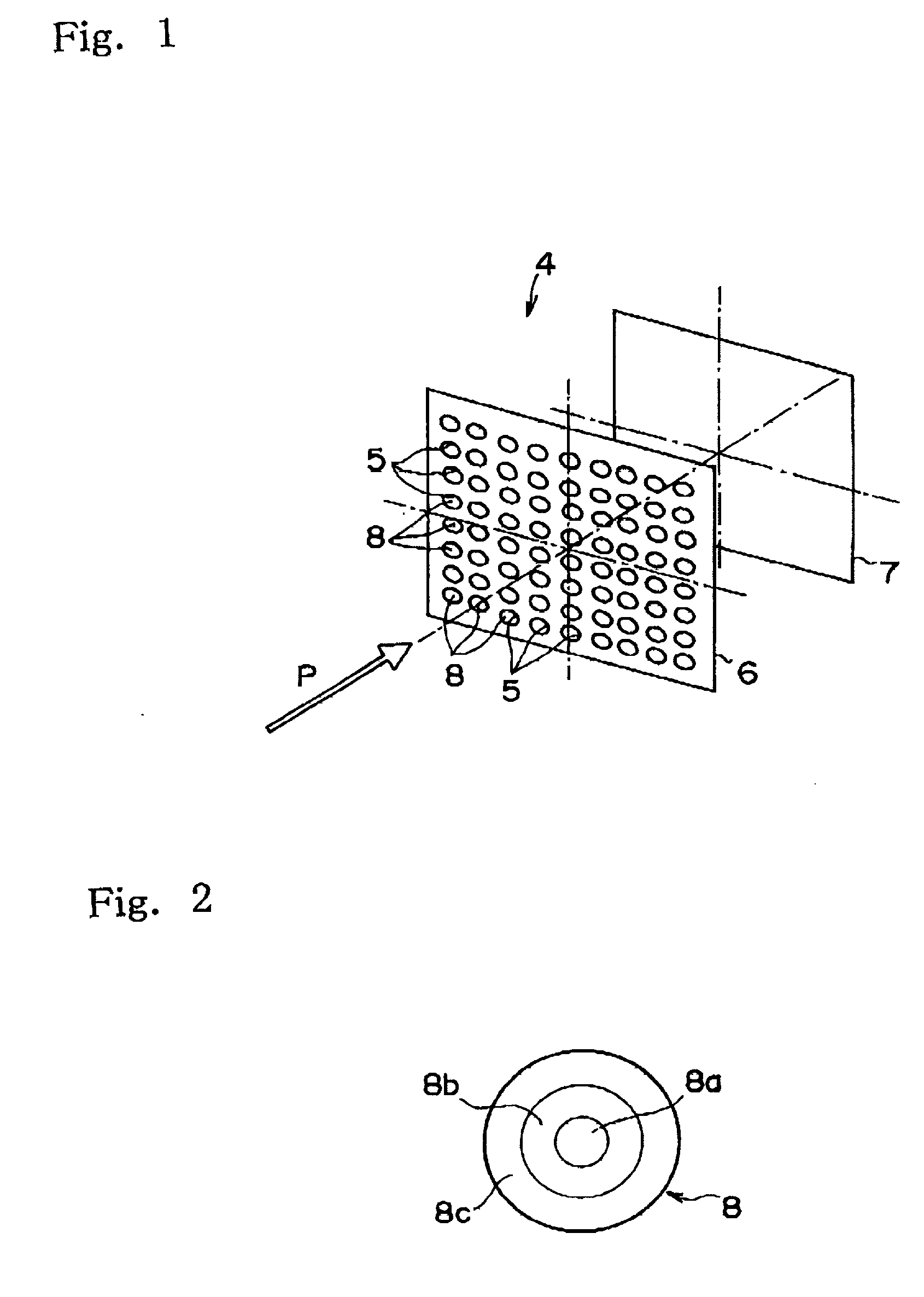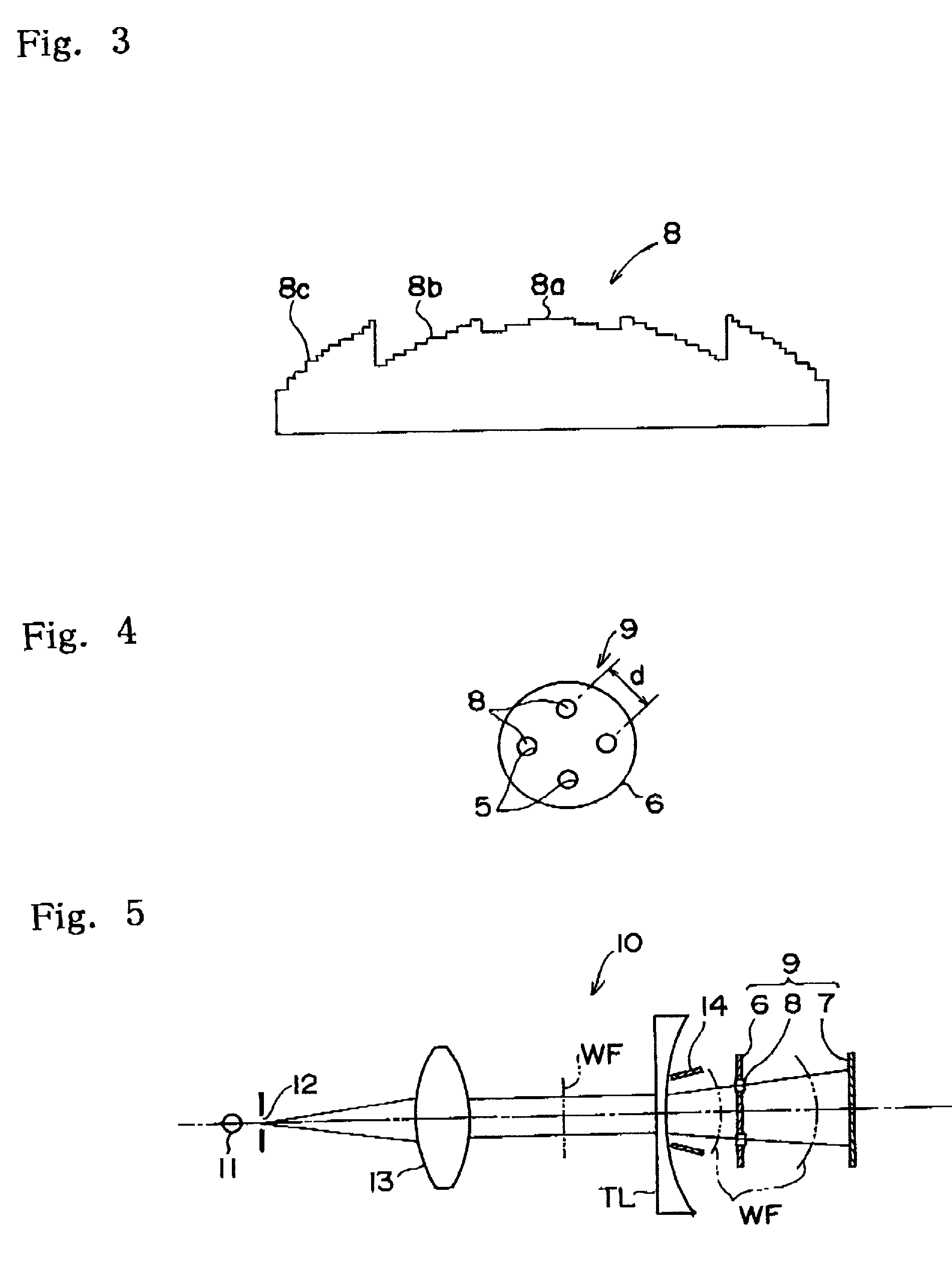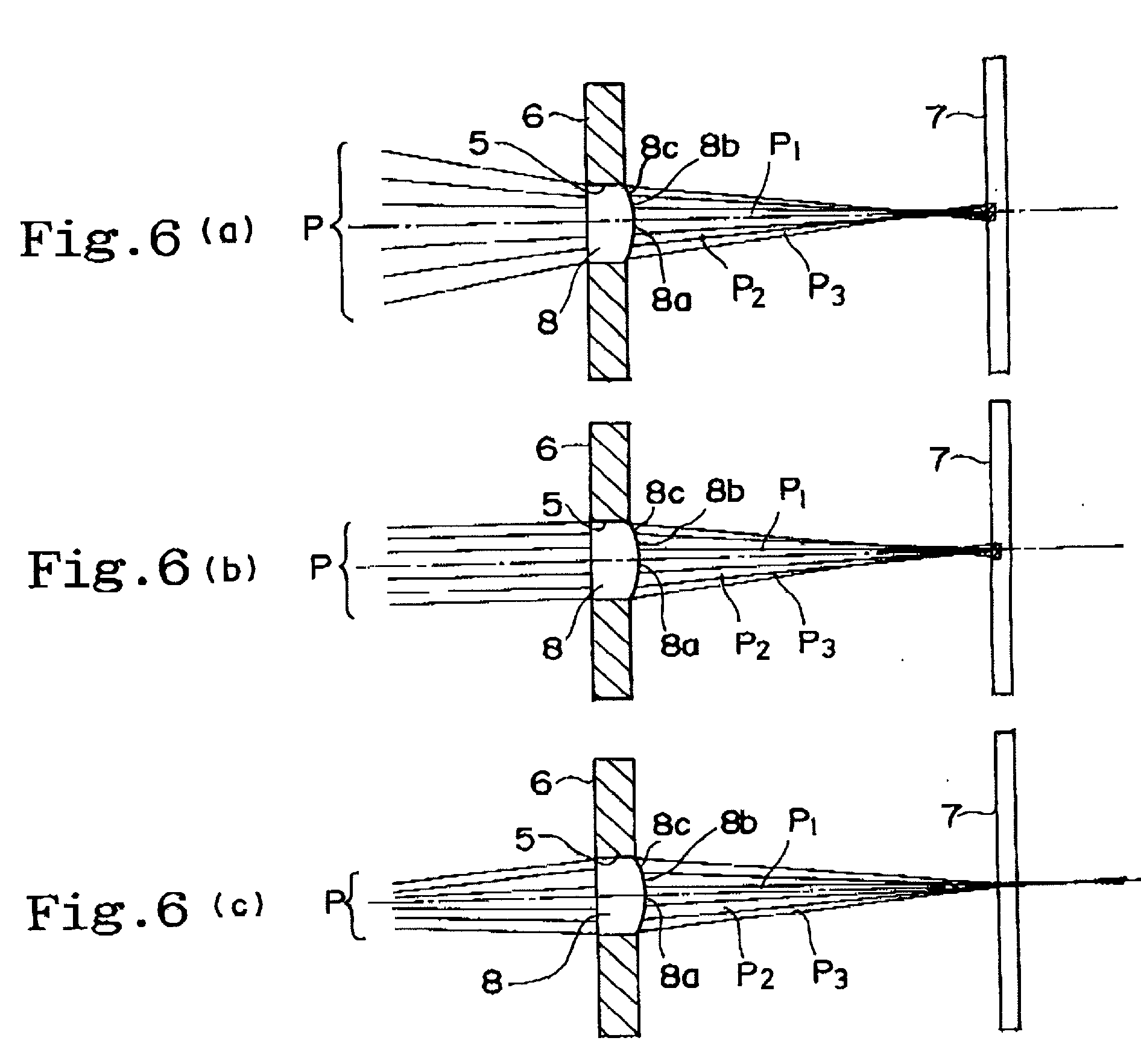Wavefront sensor, and lens meter and active optical reflecting telescope using the same
a technology of wavefront sensor and active optical reflection, which is applied in the direction of optical elements, instruments, optical radiation measurement, etc., can solve the problems of reducing the sensitivity to displacement, blurring of the luminous point of the area sensor, and significant reduction of the s/n ratio
- Summary
- Abstract
- Description
- Claims
- Application Information
AI Technical Summary
Problems solved by technology
Method used
Image
Examples
Embodiment Construction
[0048] In the comparative example, the conventional wavefront sensor shown in FIGS. 12(a)-12(c) is used in the lens meter 10 in place of the wavefront sensor 9. The Hartmann plate 1 and area sensor 3 of the conventional wavefront sensor are similar to the Hartmann plate 6 and area sensor 7, respectively, of the wavefront sensor 9 but differ therefrom in that the lenses 2 used in the Hartmann plate 1 comprise a single focus lens.
[0049] In the case where the refracting power of the tested lens TL is approximately 0 D, because a wavefront similar to the plane wave is incident to the Hartmann plate 1, the pinhole 12 forming a point light source focuses the light on the area sensor 3 and forms a clear or sharp luminous point Q1 (FIG. 12(a)). In this instance, since the luminous point Q1 has high luminous energy (as indicated by the solid line shown in FIG. 13) and excels in S / N ratio, the position of luminous point Q1 can be detected with high accuracy. In addition, any scars or contamin...
PUM
 Login to View More
Login to View More Abstract
Description
Claims
Application Information
 Login to View More
Login to View More - R&D
- Intellectual Property
- Life Sciences
- Materials
- Tech Scout
- Unparalleled Data Quality
- Higher Quality Content
- 60% Fewer Hallucinations
Browse by: Latest US Patents, China's latest patents, Technical Efficacy Thesaurus, Application Domain, Technology Topic, Popular Technical Reports.
© 2025 PatSnap. All rights reserved.Legal|Privacy policy|Modern Slavery Act Transparency Statement|Sitemap|About US| Contact US: help@patsnap.com



